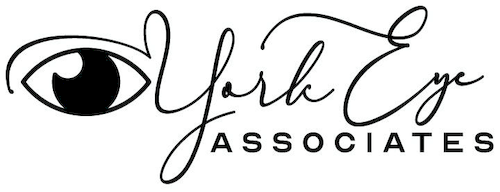
Glaucoma: Causes and Risk Factors
Glaucoma affects over 67 million people worldwide. It’s one of the primary causes of preventable vision loss and blindness among adults in the United States and Canada and is among the leading causes of blindness globally.
Types of Glaucoma
The most common type of glaucoma, open-angle glaucoma (OAG), represents more than 90% of glaucoma cases in the United States and Canada. That’s more than 2.7 million people.
Closed-angle glaucoma (CAG) and normal-tension glaucoma (NTG) are much less common types, affecting close to half a million people in the USA and Canada. Though rare, these forms of the disease can cause sudden and permanent vision loss.
OAG has no early warning signs and can only be detected during a comprehensive eye exam. If left untreated, all types of glaucoma may cause irreparable damage to your optic nerve, ultimately leading to blindness.
What Causes Glaucoma?
Open-Angle Glaucoma (OAG)
Usually, the fluid inside your eye (aqueous humor) flows into the veins at the back of your eyes through a mesh-like channel. If that channel gets blocked, or the eye produces too much fluid, the volume of liquid inside the eye builds up. This increases the internal pressure in the eye (IOP), causing OAG glaucoma.
The normal range of IOP is 12 to 20 mmHG. Pressure higher than this can start to cause OAG and affect the health of the optic nerve.
With OAG, eye pressure slowly increases over several years before any optic nerve damage starts to affect your eyesight. This is why early detection is key for successful prevention.
Closed-Angle Glaucoma (CAG)
Closed-angle glaucoma is a condition where the pressure inside your eye builds up because fluid isn’t flowing out of your eye as it should. This happens when the outer edge of the iris bunches up over the drainage canal. This occurs when the pupil enlarges too much or too quickly.
In this type of glaucoma, the IOP rises very suddenly and can cause extreme eye pain and rapid vision loss.
Normal-Tension Glaucoma (NTG)
Also known as low-tension glaucoma or normal-pressure glaucoma, NTG results from damage to the optic nerve even when eye pressure is within the normal range. It isn’t known why the optic nerve is sometimes susceptible to damage from a normal amount of eye pressure.
Less common causes of glaucoma include a blunt or chemical injury to the eye, severe eye infection, blocked blood vessels inside the eye, and inflammatory conditions.
Symptoms of Glaucoma
Symptoms can vary based on the severity of the condition and the type of glaucoma, and often become noticeable only after they have caused irreversible vision loss. For this reason, it’s vital to undergo regular comprehensive eye exams. An eye exam is the only way to detect glaucoma before it causes permanent vision loss.
Symptoms of glaucoma may include:
- Elevated eye pressure
- Blurred vision
- Eye redness
- Eye pain
- Headaches
- Blind spots in your eyes or vision loss
- Cloudy eyes
- Nausea and vomiting
- Seeing halos around lights
Glaucoma Risk Factors
Glaucoma mostly affects adults over 40, but young adults, children, and even infants can also suffer from this serious eye condition.
Age
People over 40 are at an increased risk of glaucoma, and the risk increases with each passing year. This condition is diagnosed in 2% of people over 40, but increases to more than 10% in those over 80 years of age.
Ethnicity
Hispanics and African-Americans are three to four times more likely to develop open-angle glaucoma than Caucasians. People of Asian descent are at a higher risk of closed-angle glaucoma.
Thin Corneas
People with thin corneas (less than 555um) have been found to be four to six times more likely to develop open-angle glaucoma than those with thicker corneas. The thinner the cornea, the higher the risk of developing glaucoma. Thinner corneas are also associated with increased severity of visual field loss and a more rapid progression of the disease.
Family History
If a parent or grandparent had open-angle glaucoma, you are more than 10 times more likely to develop the condition. First-degree relatives of glaucoma patients have a 22% lifetime risk of developing glaucoma themselves, compared to just 2% of the general population.
Medical History
Those with high blood pressure, heart disease, or diabetes have a much higher risk of developing glaucoma. Eye injury or eye trauma also raises the risk.
Extreme Nearsightedness or Farsightedness
People who are very nearsighted or farsighted have a greater chance of developing glaucoma than people with milder forms.
Although people at high risk of developing glaucoma should schedule regular eye exams, even those not deemed at risk can develop the disease. For this reason, it is recommended that starting at age 40, every person should schedule a comprehensive eye exam, even if their vision is clear and they have no signs of eye disease.
The sooner your eye doctor detects a problem, the sooner you can begin treatment to prevent or minimize damage to your vision. Contact York Eye Associates to book your eye exam today!
Our practice serves patients from Gainesville, Sherman, Sanger, and Cooke County, Texas and surrounding communities.





